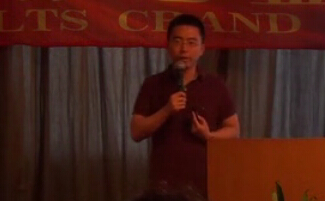雅思听力文章之dna检测下的犯罪证据
2013-12-12 11:11 供稿单位: 新航道
出国英语考试有哪些 雅思6.5是什么水平 雅思阅读评分标准 托福阅读评分标准 雅思和托福的区别
This is IN THE NEWS in VOA Special English.
The use of scientific knowledge in legal cases is called forensics, from the Latin term for a public forum. The public may get the idea from TV that forensic science can solve almost any mystery. Yet the methods used in crime laboratories are now themselves being examined.
In the United States, a two-year study requested by Congress was released earlier this year. It found that except for nuclear DNA analysis, no forensic method has really proven itself as a way to link evidence to a person.
The National Research Council, part of the National Academies, suggested ways to strengthen forensic science in the United States. A committee found serious problems in the current system. Differences between budgets, equipment and the availability of skilled workers have created uneven quality from lab to lab. No one even knows how many forensics laboratories, public or private, there are.
There are no national standards for the employees. And only four states -- Texas, Oklahoma, New York and now Missouri -- require lab approval by an accrediting organization.
The Innocence Project is a group that works to help prisoners who could be proven innocent by DNA testing. Last month, its director, Peter Neufeld, spoke at a Senate hearing on the report. He told the story of Roy Brown, who was found guilty of murder and who also attended the hearing.
The case against him included a bite mark examined by a forensic dentist. The real killer was later identified through DNA. By that time, Roy Brown had served fifteen years in prison.
So far, DNA testing has cleared -- the term is exonerated -- more than two hundred forty people in the United States. Some had been sentenced to death, though none had been executed already.
Peter Neufeld says the issue is not just about protecting the innocent, but also about catching the guilty.
PETER NEUFELD: "Because in each of these cases, the real perpetrator was out there committing other heinous crimes."
The report earlier this year urged Congress to establish a National Institute of Forensic Science. It would lead research efforts and establish and enforce standards.
Sarah Chu from the Innocence Project says her group believes this is the most important recommendation. But the American Society of Crime Laboratory Directors says there is no need to create a new agency to handle that task. In March the society wrote a letter to Congress in reaction to the report.
The group said crime laboratories today are doing more with less. They face heavy demands with limited resources and limited ability to meet training and other professional needs. The group said Congress should support large amounts of money for all areas of forensic science, not just DNA.
In the United States, criminal suspects have a right to face their accusers at trial. In June, the Supreme Court ruled five to four that analysts who prepare crime lab reports can be called to appear. The justices said being able to cross-examine the analysts could help uncover any problems with the testing methods or results used as evidence.
And that's IN THE NEWS in VOA Special English, written by Brianna Blake. I'm Steve Ember.
- 上一篇:雅思听力材料之乌克兰基辅列宁雕像遭破坏
- 下一篇:雅思听力文章之为什么我们会担心信任

- 新航道,英语成功之道。时间获取新航道英语学习资料和新鲜资讯,请在微信公众账号中搜索「新航道英语」或者「xhdenglish」,或用手机扫描左方二维码,即可获得新航道每日精华内容推送和英语学习经验分享,并参与新航道举办的各项活动。
精彩专题
更多视频荟萃
更多
-
新航道姚骏鹏-雅思阅读高分攻略
时长:03-06

-
新航道陈侃侃-雅思口语要有范儿
时长:03-06

-
【3分钟学雅思】王大锤告诉你为啥药不能停
时长:01-12

-
【3分钟学雅思】全世界个感官餐厅
时长:01-12
热门文章
更多
-
8月31日雅思广州考机考初体验
选择机考模式的考生将通过机考模式参加听...








